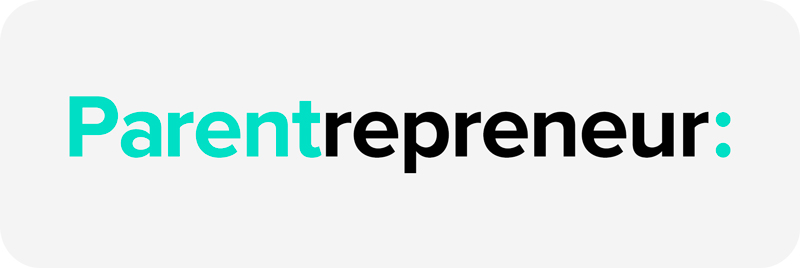You don’t need us to tell you that companies have ups and downs – we’ve seen a fair few in our time. So what does tough look like? It might be projects on hold, clients reducing budgets, or simply a struggle to hire. Over the years, we’ve learned to ride this out by utilising this unutilised time to think about our own business, and if you’re in a temporary slump, now is the time to think hard about how you can better your business.
Rethink your own business processes
You can afford to take your eye off the pipeline for a few days, however scary the concept is, and it will be hugely beneficial to use quiet periods to improve business-critical processes. This is something that we did earlier in the year, and I’m glad to say it made a difference. Here are some things we learned that you can borrow from.
Improve your time tracking and time management
Lofty statement incoming: Time tracking is one of the best things you can implement to help with revenue, forecasting and reporting, particularly in a business where labour is the main cost. Time is your biggest resource, and if you can’t see where it’s being spent, you have poor visibility of your business. Worse still, you could be losing money.
The trick is implementing thorough time tracking without your people feeling they’re being watched. In our case, that meant explaining the rationale and importance:
- Ensuring hourly paid work is being categorised correctly and charged (at least 5% of our billables weren’t getting billed)
- Assessing the profitability of fixed-price projects, service retainers, and client accounts
- Improving the accuracy of project estimation in future
Improve your processes
With the joyful arrival of twins last year, and as a director in the business, Nic made an effort to not only improve time tracking to see where exactly his time was going but to use that data to identify ‘time sucks’ and “eliminate, automate and delegate” as many as possible (read more about this in a recent blog). In short, we made the business more efficient.
In the long run, this reduces opportunity costs, creates better working practices, and can be applied across the business and even to other members of staff. It also means that you can review and re-review where your time is going whenever you want. And then make any necessary adjustments.
Founders and business owners, don’t be afraid to track your own time. You may be shocked to discover where it’s going.
Review your finances
Cash is king. Do you have enough stashed away to weather a storm? How do you know?
Quality forecasting, monthly reviews, and developing a set of KPIs, a business dashboard or a scorecard are all essential to understanding your business and what levers you can pull to ensure long-term viability.
This doesn’t necessarily mean cutting costs and calling it profit. Short-term profits might seem tasty, but you have to keep an eye on the long-term profits too.
Understand more about your customers
You can build a company from the inside out and it might look and feel great to you and your staff. But what about your customers? It’s also beneficial to build from the outside in. Listen to what your customers or clients are saying and use it to instruct practices, pricing models, communication and marketing. They are a direct conduit for feedback, and many businesses completely overlook this.
Don’t forget your network
Networking is no longer standing around in hotel function rooms with a “My name is” badge, questionable coffee and lukewarm croissants. Networking can be WhatsApp groups, walks and talks, online communities, and so much more. It’s important to remember to network, not only for new business but for new partnerships, too. Businesses and business leaders often help each other out, whether that’s with relevant services, shared ideas or just a shoulder to lean on. Get out there!
Revisit and optimise your service agreements
We see many organisations applying a “set it and forget it” mindset to SLAs. Ie: “It’s always been this way.” Well, it doesn’t have to be. Review your SLAs periodically, and specifically, put a formal process in place that helps you calculate exactly what they’re costing you and where the money’s going.
We built an SLA retainer model that takes into account time for planned and reactive maintenance, client communications, desired response times, and small feature requests. It enables us to give transparency to clients so they can see how we’ve calculated our SLA retainers. And by plugging these budgets into our time tracking, we can identify whether we’re delivering value.
While most of our SLA retainers were about right, unsurprisingly, some were unprofitable. Others were revised to work a little more in our clients’ favour, delivering them more value for money. It’s a rare but pleasant day being able to go to a client and offer them more for less!
But, your mileage may vary. You may find that you’re overservicing your clients, or at the other end of the stick, you’re not giving them enough, and perhaps that’s why they’re taking their business elsewhere. It’s all about providing better value and having the data in place to help you understand exactly how to do that.
From there, you can make the bigger, broader decisions. Perhaps you stop doing fixed-price work. Maybe you completely overhaul your SLAs for the first time since you started the business.
Either way, this is about both long-term customer retention and business profitability.
Pay for some advice
Yes, money may be tight and you may feel like you can’t afford to. But the question is, can you afford not to? Sometimes, you can’t see the wood for the trees. We invested in great people to improve our business, and while they are all very separate in what they do and deliver, and none of them are remarkably expensive, their collective efforts across the business are significant. In our case:
- Fractional CFO: Frank chat about numbers
- Marketing guy Ben: For digital content and things
- Ad guy: For targeting and pulling in leads
- Brilliant and Human: Helping us love our clients
In summary
So, let’s recap. If you do find yourself with quiet moments, put them to good use. Turn the focus inwards, if only for a few days. Spread that over a few months, maybe. It’ll quickly add up and help you tweak what needs tweaking. It might even open your eyes to a problem that’s been right in front of you the whole time.
Whether you apply automation, integration, an improved set of tools, or an entirely new application, it’s all part of the bigger story of building a better business and making business a breeze.
Sound like something you need?
Give us a shout. We’d happily work with you to make improvements to your organisation.













